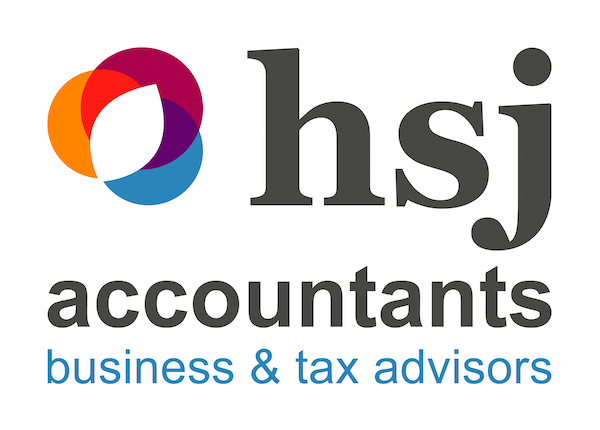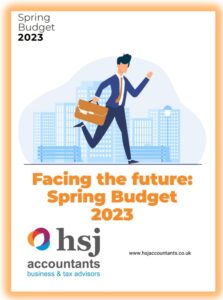Jeremy Hunt announced his second fiscal statement and first Budget since becoming Chancellor against a backdrop of fragile public finances, an ongoing cost of living crisis, and increased Government borrowing.
In January, the Chancellor appealed to the nine million ‘economically inactive’ people in the UK, specifically retirees, claiming: “to those who retired early due to the pandemic, or haven’t found the right role after furlough, I say Britain needs you.”
Ahead of time, then, we expected the Chancellor’s speech – dubbed the ‘back to work Budget’ by the media – to focus on the Government’s economic priorities: halving inflation, growing the economy, and reducing national debt.
With a surprise surplus of £5.4 billion in January due to record self-assessment tax payments, and year-to-date borrowing undershooting the Office for Budget Responsibility (OBR) forecast by £30.6bn, the question has been whether Hunt would pay off some of what the UK owes, or funnel it back into the economy.
With that in mind, the Chancellor’s speech highlighted a plan of two halves: a series of short-term measures designed to provide immediate support to businesses and households, and a longer-term strategy for growth.
But how does his Budget stack up against the Government’s priorities – and what does it mean for people and businesses across the UK?
Here’s a summary of the key announcements…
Economic outlook
As is customary for an annual Budget, Hunt started his statement with a summary of the OBR’s Economic and Fiscal Outlook report, which it published the same day.
The OBR’s biannual report is a forecast of the UK economy that uses the changes to fiscal policy announced in the Budget to present a five-year outline of the future.
The economic forecast shared similar themes to the one the OBR released late last year – high inflation, contracting GDP, falling living standards – but owing to lower-than-expected wholesale energy prices, the outlook is more positive than before.
“The economic and fiscal outlook has brightened somewhat since our previous forecast in November”, the OBR wrote.
The UK narrowly avoided a recession in Q4 2022, according to the OBR, but GDP will contract by 0.2% in 2023, markedly more positive than its previous forecast of a 1.4% fall in GDP. Furthermore, the UK will technically avoid a recession according to OBR data, which is defined as two successive quarters of economic decline.
GDP growth is then set to pick up to 1.8% in 2024 and 2.5% in 2025 “as interest rates start to fall and drops in energy and other tradable goods prices take inflation below the [Bank of England’s] 2% target”.
Inflation peaked at 11.1% in October 2022 and will “fall sharply” to 2.9% by the end of 2023, a more rapid decline than the OBR expected in November, owing to a fall in gas and electricity prices, and an easing of supply bottlenecks.
Inflation for 2023 will average out to 6.1% – 1.2 percentage points lower than the OBR’s November forecast – before dropping to 0.9% in 2024, down to zero through to mid-2026 before returning to 2% by 2028.
The OBR warned:
“The average of past forecast errors is not always a good indicator of the degree of uncertainty at specific points in time, especially following very large shocks such as last year’s energy price rises”.
Real household disposable income, meanwhile, is expected to fall by a total of 5.7% over the 2022/23 and 2023/24 financial years. Although this is 1.4 percentage points less than forecast in November, it would still be the largest two-year fall since records began in 1956-57.
The unemployment rate is expected to “rise modestly” as growth weakens to a peak of 4.4% (1.5m people), which is lower than the peak of 4.9% previously forecast due to “the improved outlook for real GDP in the near term”.
The labour supply has worried the Government for a time now, with the participation of workers aged 16 to 64 falling from 64% in 2019 to 63.2% in 2022. In its central forecast, the OBR predicts the participation rate will fall slightly in the next two years before rising back to 63% in 2027. In the upside scenario, participation recovers quickly and ultimately rises to 63.9% in 2027.
On public sector net debt, the measure that includes debt owned by the Bank of England, the OBR predicts that Government borrowing will rise from 100.6% of GDP in 2022/23 and peak at 103.1% the following year. It then declines in the final four years of the forecast, falling to 96.9% of GDP in 2027/28.
According to the Government’s own fiscal rules, underlying debt must fall as a percentage of GDP by the fifth year of a rolling five-year period. Debt must also be below 3% of GDP in the same year, which the OBR said the Government will meet with a £39.2bn margin.
Personal changes
Back to work
The number of 16 to 64-year-olds in employment has failed to return to pre-pandemic levels, with 8.86m “economically inactive” people not currently seeking paid work.
Meanwhile, the number of job vacancies remains high at 1.1m – 328,000 more compared to early 2020 – meaning that fewer people are working and paying taxes than there could be.
To increase worker participation, Hunt announced his plan to “remove the barriers” to work for groups including older workers, parents and people with health conditions, causing many to dub the announcement as a ‘back to work’ Budget.
Pensions lifetime allowance
In the run-up to the Budget, many speculated that Hunt would increase the pensions lifetime allowance (LTA) to allow people to increase the amount they receive in retirement.
Instead, he scrapped the limit altogether, claiming this would incentivise over-50s to work for longer.
The LTA is the total amount you can put in your private pension pot before tax. The cap was due to stay at £1,073,100 until 2026, but workers will now be able to make unlimited pension contributions during their lifetime.
Meanwhile, the annual allowance – the maximum tax-free amount people can pay into private pensions per year – will rise by 50% from £40,000 to £60,000.
According to the British Medical Association, the current LTA rate is “punitive”, and encourages senior doctors to leave the NHS.
Hunt hopes that abolishing the LTA and raising the annual allowance will address doctors’ concerns, as well as encourage older workers across the UK to return to the workforce.
However, some believe that these measures will only benefit top earners.
Expansion of free childcare
The Chancellor also announced significant reforms to childcare to encourage parents to return to work.
Working parents of children aged three to four are currently entitled to 15 hours of free childcare a week, or 30 if both parents are in work and earn at least the national minimum wage. However, the same support is not available for parents earning more than £100,000 a year in combined income.
The Government will expand this support to working parents of children over the age of nine months by September 2025.
Childcare in the UK is among the most expensive in the world, with average full-time nursery fees for a child under two standing at nearly £15,000 a year.
According to the Treasury, increased access to free childcare will reduce discrimination against women, who disproportionately take on care responsibilities, and “benefit the wider economy”.
However, the phased nature of these reforms means they will not come into effect until April 2024 at the earliest, so many parents of young children will not benefit.
The Chancellor also pledged more “wrap-around” care for working parents, bookending school days to allow parents to work longer hours without incurring costly childcare bills.
Returnerships
Hunt will also launch a ‘returnerships’ programme that will offer skills training tailored for the over-50s, taking previous experience into account.
The Government will add a further 8,000 places per year (an increase of 14%) to its ‘skills boot camps’, which reskill people in sectors such as construction and technology.
Energy support
Following pressure to provide extra support for households struggling with soaring energy bills, the Chancellor announced a three-month extension of the energy price guarantee.
At the moment, the scheme caps the average household’s energy bills at £2,500 a year. This limit was due to rise to £3,000 from April 2023 onwards.
However, Hunt’s announcement means energy bill support will continue at the same levels until the end of June.
Despite previously saying there was “no headroom” for increased energy support, Hunt said: “With energy bills set to fall from July onwards, this temporary change will bridge the gap and ease the pressure on families, while also helping to lower inflation too.”
Customers on prepayment metres will see energy charges brought into line with prices for customers who pay via direct debit. However, the £400 discount from the Energy Bills Support Scheme will end as planned.
Business changes
Capital investment
With the annual super-deduction due to end before the start of the new tax year, the Chancellor has announced that the Government will introduce a “full expensing” scheme to encourage companies to invest in plant, machinery and technology.
From 1 April 2023 until 31 March 2026, companies across the country will be able to claim back 100% of their qualifying costs. For the next three years, the Government says 99% of companies will be able to immediately reclaim every pound invested.
The Chancellor also said the Government plans to make this measure permanent (if the economy allows) post-2026, adding that the policy will make the UK’s capital allowance regime “the joint most generous” of any advanced economy.
He said: “If the super-deduction was allowed to end without a replacement, we would have fallen down the international league tables for tax competitiveness and damaged growth. I could not allow that to happen.”
R&D tax relief
During the Autumn Statement in 2022, the Chancellor announced measures to reduce fraudulent research and development claims by lowering the amount SMEs can claim in R&D expenditure.
In the Spring Budget, however, Hunt said the Government will introduce a new scheme for loss-making, “R&D intensive” SMEs. Companies that spend at least 40% of their total expenditure on R&D will be considered R&D intensive.
These R&D-focused SMEs will be able to claim a higher payable credit rate of 14.5% rather than the reduced 10% announced in the Autumn Statement.
In practice, this means they’ll be eligible to claim back £27 for every £100 they spend.
The changes are part of a £1.8bn support package for development and investment in the UK’s tech-pioneering companies.
Consultations into the merging of the R&D expenditure credit (RDEC) and SME R&D schemes have now closed and all responses are currently under consideration. The Government says this may still be a possibility come April 2024.
Investment zones
The Chancellor followed up with more details on the investment zones announced in November’s Autumn Statement.
The refocused investment zones programme will focus on 12 growth clusters across the UK, including four across Scotland, Wales and Northern Ireland.
Each English investment zone will have access to interventions worth £80m over five years, including tax reliefs and grant funding.
They will be focused on one of a series of key sectors: technology, creative industries, life sciences, advanced manufacturing and the green sector.
Eight areas in England have been shortlisted for the investment zones – the East Midlands, Greater Manchester, Liverpool, the North East, South Yorkshire, the Tees Valley, the West Midlands and West Yorkshire.
The Chancellor said: “To be chosen, each area must identify a location where they can offer a bold and imaginative partnership between local government and a university or research institute in a way that catalyses new innovation clusters.
“If the application is successful, they will have access to £80m of support for a range of interventions including skills, infrastructure, tax reliefs and business rates retention.”
Hunt also set out plans to invest £200m in local regeneration projects across England and £400m for new levelling-up partnerships.
Creative industry expenditure
Creative industries across the UK will receive continued Government support through reformed tax reliefs and expenditure credits.
Expenditure for high-end TV production will remain at £1m per hour. The Government will also extend the higher rates of theatre, orchestra, and museums and galleries tax reliefs for two further years.
Corporation tax rises as expected
As previously announced, the corporation tax rate will increase from 19% to 25% in April 2023 but with marginal relief for businesses with profits between £50,000 and £250,000.
According to Hunt, only 10% of companies will pay the 25% rate, and the UK has the lowest rate of corporation tax in the G7.
Other announcements
Alcohol and cigarette duty
From August, a new system for calculating taxes on alcohol will come into force, meaning duty rates will increase in line with the Retail Price Index. In a promise to cherish post-Brexit British pubs, however, draught relief will increase to 9.2% for draught beer and cider and to 23% for wine, spirits-based and other fermented draught products.
The Chancellor said this will mean a draught pint will be 11p cheaper than if bought in a supermarket.
When it comes to cigarettes, from 15 March 2023 duty rates on all tobacco products will increase by RPI +2%, hand-rolling tobacco will increase by RPI +6% and the minimum excise tax will increase by RPI +3% this year.
Fuel duty
Fuel duties will be maintained at current levels for an additional 12 months, cancelling the planned increase in line with inflation for 2023/24.
The Government will spend over £5bn maintaining fuel duty at current levels for the next 12 months, including keeping the 5p cut in place.
The rates will stay “in the long term under review, including carefully considering support for motorists, fiscal implications and use of fuels”, the Treasury wrote.
Tax simplification
The Government will collaborate with businesses and representative bodies to review tax guidance for small businesses over the next two years to help them interact with the tax system.
Guidance will be “clear, simple and easy to find, introduce step-by-step interactive guidance and modernise HMRC forms to improve the customer experience”, the Treasury wrote.
Meanwhile, the Government will consult on expanding the cash basis, which is a simplified way for sole traders to calculate and pay their income tax.
It will also work to support better digital communication with taxpayers and deliver IT systems that enable tax agents to payroll benefits-in-kind on behalf of employers.
Energy subsidy and security
Affirming that an enterprise economy “needs cheap reliable energy”, Hunt announced an extension to the climate change agreement scheme for two years to allow eligible businesses £600m of tax relief on energy efficiency measures.
He also allocated up to £20bn for early deployment of carbon capture, usage and storage (CCUS) – “paving the way for CCUS everywhere across the UK as we approach 2050”. A shortlist of projects can enter a selection process later this year.
AI competition
One of Hunt’s main goals for the country’s future is an investment in advancements of ground-breaking artificial intelligence (AI) technologies.
The Government plans to award a £1m prize every year for the next 10 years to researchers that drive progress in critical areas of AI.
Charity support
The Government is providing over £100m of support for charities and community organisations in England for those most at risk due to increased demand from vulnerable groups and high delivery costs.
You can download a copy of this report by clicking the image below:



